NATURE INSPIRED INVENTION --- Ships; and at sea, he felt at home. Now, home is the sailor, home at sea.
If you have tried following a longer route on your way home just because the shorter route to your house was flooded, then, surely, you have felt a bit of what the men of the ancient times felt before the invention of boats and ships. They had to travel in circle just to reach to a destination they could walk straight to if it were not for the river, sea or ocean that stood as a barrier in their way. The early men understood that they couldn't just walk across the water, probably, some of them died drowned while trying. They were familiar with the fact that when a stone is thrown into the water, it carefully sank inside.
But there was something in nature that marvelled them. What marveled them was the fact that dead branches of trees hollow inside, whose weight is much more than that of the same stone that sank into the water, floats when it is dropped into the ocean. They also saw how leaves of trees float in water. What surprised them the most was that when they held on to the dead tree trunk floating on the sea, they did not drown. At that point, the early men thought to themselves, If they can replicate this idea, they can be able to transport themselves down the sea and save themselves from the stress of traveling in circle. The application of this idea lead to the birth of ships and boats in the early city of .
In today's discussion, we will be considering just ships and not boats too, (to avoid making this article lengthy and boring) as both of them are differentiated only based on size and the load carrying capacity, but regardless they have the same working principle. We will learn what inspired the invention of ships, and also how man found the solution of biofouling (a problem encountered by both ships and sea) in nature.
SHIP
A ship is a very large vessel in which humans uses to travel across deep waters like oceans and seas. Ships are not used only for transporting humans, they are also used for various purposes like transporting goods, fishing, defense and also for research. The major difference between a boat and a ship is based on the shape, the amount of load it can carry and it's size.
Probably the oldest means of transportation, the earliest trades done between countries that had an ocean or any deep waters demarcating them were done using ships. Even countries far from each other performed trade with each other using ships. Thus, it is logical to say that ships have played so much role in the world of commerce since ancient times.
Considering also the world will leave in today, the largest portion of the world's commerce is done through ship transportation, as unlike the air that has limitation in the weight of the goods it can carry, ships are built to carry goods that has weight like crude oil, cars, containers filled with goods e.t.c. Thus, the importance of ship as a means of transportation cannot be over emphasized.
TYPES OF SHIPS
There are so many types of ships, each of them classified based on their purpose. Some of the types of ship we have include cargo ship, RoRo ship, tankers, passenger ship, fishing vessels and high speed crafts. Let me describe them briefly.
Cargo Ships
Some ships are mainly used to transport goods or cargo (like petroleum, furnitures, food e.t.c) from one place to another, we call those ships cargo ships. For example if you desire to import crude oil from another country to the country where you are living, the ship that you used to transport that imported goods (in this case barrels of crude oil) is known as cargo ship. We have so many cargo ships that are currently sailing round the world, and they can have a single-deck or multi-deck hull.
Roll on Roll off Ship (RoRo Ship)
The RoRo ship is like a cargo ship, but a more modernized one. Unlike the normal cargo ship that requires a crane to carry up the goods into the ship, the RoRo Ship has stuffs like an inclined plane that enables you to roll the goods in and out of the ship. Take for instance, if one wants to transport a car from one country to another across the sea, the normal cargo ship would require a crane to carry the car up into the ship, but if one was to transport it using a RoRo ship, all he or she needs to do is to drive the car into the ship. The RoRo ship is a more easier and safer means, for that reason, it is used in importing cars. Also, while those cars are onboard the ship, there is a provision in the deck of the ship that enables them to be held to a point so as to prevent them from shaking when the ship encounters any turbulence while at sea.
Passenger Ships
We classify any ship that can carry more than 12 passengers as a passenger ship. Examples of passenger ship includes, holiday ships, cruise e.t.c.
Tankers
Some ships are mainly used for transporting huge quantities of liquid. Those kinds of ships are known as Tankers. Liquids that can be transported using such vessels include, wine, oil, chemicals e.t.c. We have different sizes of tankers, and as you know, the larger the vessel, the more the quantity of liquid it can contain. Larger vessel can carry up to several hundred thousand tons of liquid substance.
Fishing Vessel
This kind of ships are designed to be used in catching fishes and other marine life, thus, they don't have those features found in passenger ships like, restruants, play rooms e.t.c . These fishing vessels can be used for both commercial purpose and for leisure purpose.
High Speed Craft
Just as the name implies, high speed crafts are faster than all other types of ships. Due to their speed, sometimes, they are referred to as fast ferries. They are different designs of the high speed crafts, these designs include, hovercraft, catamaran and the monohull designs e.t.c. Most high speed crafts are designed as passengers ferries to be used by civilians. The reason for their ability to travel very fast is because of the powerful turbine propellers they posses, and their ability to harness air pressure efficiently.
Now we have seen the different types of ships, but we all know that ships weren't the way the are now when they were invented, rather they were crude. Let us now discuss on how ships advanced to what they are today.
HISTORY OF SHIPS
Man didn't start building ships, he started with bringing woods like bamboo together to make raft. This rafts, weren't so much effective, as the could be used to travel only through very small rivers, and if a storm were to occur, it's occupants are in great danger. Later, very crude boats were made by making hollows in tree trunks. These boats made were a bit effective than the raft, but they still weren't remarkable as they kept turning and sinking.
The first remarkable ship was built by the Egyptians in 4000 BC. What made their ship remarkable was that the Egyptians used reeds in building the boat, and not necessarily wood. This reed boats were made to have mast, and sails, thus, the boat did not need constant paddling as with the help of the sails, when the day is windy, the boat can be moved by the force of the wind. The reed boats of the 4000 BC are regarded as the first sailing boats in the world. The Egyptians used it mostly while moving a little distance across the River Nile.
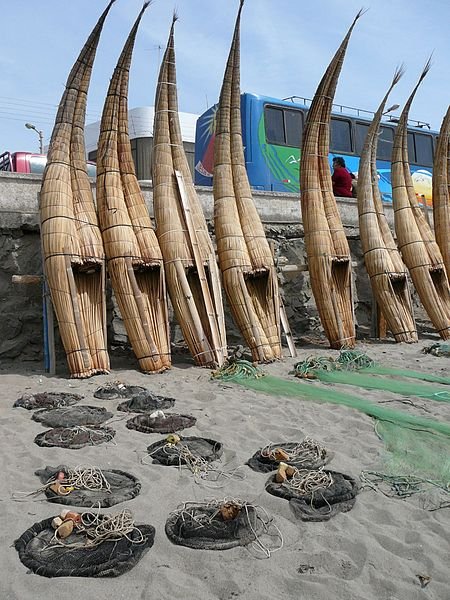
Picture by Roy $ Danielle - Wikicommons CC BY-SA 2.0
Reed boats made by the Egyptians
In 2500 BC, the ancient Egyptians went back to using wood in building boats. This time, not really the way the early men did, (i.e they didn't just find a tree
trunk and made it hollow), instead they hit woods together to form a boat. The boats they made this time weren't only effective, they could withstand sailing across the ocean, even travel longer distance than the reed boats.
The Egyptians did not stay long in the helm of civilization, by 1550 BC to about 300 BC the Phoenicians were taking the lead. What the Phoenicians used in sailing across the ocean was a small sailing vessel called the galley. The galley was powered by man, and the phoenicians did not use it only for traveling, they used it in both trading with their neighbors and fighting.
Nothing last forever, by 1000 AD, the Vikings invented a better boat, they were longboats, the Vikings referred to them as ships. These ships had sails, and more than sixty men where needed to row the ship across the sea. (This attribute, seperates the ship from their normal boats that can be paddled by one or two persons). They didn't make the ship big, rather, they made it long and narrow, thus, enabling them to travel even along narrow rivers and through open seas.
A century later, the Chinese built a boat known as the junks. Special features the junk has that all other previous vessels before it did not have are a rudder for steering the boat, battens which they placed at the sail of the boat to make the sail stronger, and a more water tight compartments. Just as the Phoenicians, the Chinese made use of their boat in fighting, trading and in transportation. By 1450, wooden ships that made use of three to four masts were being used in trading and exploration. In the beginning of the 1800s, the Clipper ships were built. This Clipper ships had tall masts, and slim but long hulls which made them fast sailing ships.
All these early ships used mainly manpower and the power harnessed from the wind by the sails. But they weren't efficient as man gets tired, the wind itself is unpredictable and doesn't blow all the time. The first ship that wasn't powered by manpower was built in 1819. This ship made use of steam power from coal and wind power, thus eliminating the need for paddling the boat. This steam powered boat was still built using wood.
The first ship to be built from iron was built in 1845. This ocean liner wasn't built to make use of sails, rather, it was driven by propellers. By 1910, those ships that were previously powered by the combustion of coal where converted so as to be powered by diesel. In 1955, Stan Cadwallader built the hovercraft boat. It is a high speed boat, and it is built to be float on cushions of air.
Cargo ships for transporting goods became more modernized and widely used in 1980s. These ships were built to be able to carry containers stacked on their deck. These ships can carry up to a thousand containers across the sea, the same time. The passenger cruise that has restaurant, rooms for recreation on it are one of the amazing ship built in the 1990s.
Looking at ships from a distance, one won't help but wonder why it doesn't sink as it sails across the ocean. The answer to this question was giving by Archimedes, in his principle of flotation.
HOW DOES SHIPS FLOAT
Not just ships, every object that float, floats according to Archimedes principles. Once upon a time, a king during the time of Archimedes had a gold crown made for him, but he really needed to know if the crown was really made of gold or not. Their was one way of knowing, that was by melting the crown, but the king won't hear of that. He tasked Archimedes, who was probably the brightest mind of that time, to find out if it was made of gold without melting it. The discovery of the solution to that problem lead to the statement of the Archimedes principle.
Archimedes principle states that upward buoyant force that is exerted on a body immersed in a fluid, whether fully or partially submerged, is equal to the weight of the fluid that the body displaces and acts in the upward direction at the center of mass of the displaced fluid. Source
The density of an object (which is how much a certain volume of an object weighs) determines if a body floats or rises in a fluid. If the density of the object is higher than the density of the liquid it floats in, it sinks. There are forces that acts on an object in fluid. Those forces are upthrust (buoyancy), weight of the object, and drag as a result of the viscosity of the fluid. Let's try to relate this principle with how ships float.
Density = Mass/Volume.
For us to fully appreciate Archimedes principle, we are going to be performing a little experiment. For this experiment, we will be needing a sphere made of a heavy metal like steel and weighs about 20 tons. We will carry the volume of the object.
(20 tons was just randomly selected, but the experimental procedure is accurate)
First Experiment:-
Design the 20 tons to have a volume of 10 m³. Then gently drop the 20 tons sphere into the sea. You will observe that the 20 tons sphere falls right in into bottom of the sea. Relating our result to Archimedes principle, what happened was that our sphere that weighs 20 tons and has a volume of 10 m³ displaces 10 m³ of water, and thus, it experiences a buoyancy of 10 tons. What this means is that there is 10 tons more of weight of the object that is bent on pushing the object down, thus, it sinks.
Check out this DIY article: Do Brake Rotors Come in Pairs? (Fully Explained)
Second Experiment
If we modify the volume of the 20 tons sphere, keeping it at 20 m³ this time, and then toss it into the sea, we will observe that the sphere sinks completely, but it doesn't fall to the bottom of the sea, rather, it remains at just the brim of the sea. We call this neutral buoyancy. Relating what happened to Archimedes principle, this 20 tons sphere with a volume of 20 m³ displaces water of 20 m³ and experiences a 20 tons buoyancy force act on it. Thus, its whole body sinks, but the buoyancy force is enough to keep it just at the brim.
Third Experiment.
If we were to modify the 20 tons sphere to have a volume of 30 m³, and drop it into the sea, it will displace the 30 m³ of water and experience 30 tons buoyancy force. Thus the buoyancy is 10 tons more than the weight of the object, thus, 10 tons weight of the object floats on the surface of the water even though 10 tons of it is inside the water. (i.e, it is partly submerged). If the volume is increased to 40 m³, the whole cube floats.
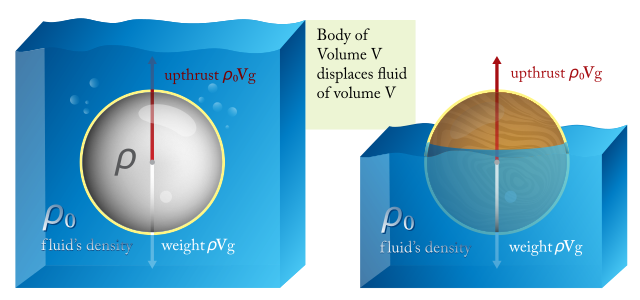
Picture by Yupi666 - Wikicommons CC BY-SA 3.0
How an object floats
This third experiment is exactly how ships float, they are made to have a density less than the density of water by making it's volume higher than its weight, thus giving it the ability to float.
Right now we know how ships float, I mustn't mention a problem that is observed mostly in ships and boats that sail across water bodies.
LITTLE PROBLEM THAT CAUSES SO MUCH HARM: BIOFOULING
There is one problem that is very common to every ship as it sails on water, the problem is known as biofouling. Everytime ships, boats, e.t.c sails on water, algae, slime, barnacles and other microorganisms cling to the hull of the ship. This clinging causes more drag on the ship making the ship not to travel fast, increase the weight of the ship and thus, to overcome this extra weight and drag, more fuel has to be spent. The US Navy spends $50 million every year to remove these microorganisms from their ships hull. This remain a problem till an engineer Tony Brennan realized the reason why the shark remains very clean regardless of sailing through the same water the ships and other marine lives sail through.
SHARKS
Among the family of fishes that are known to have skeletons made of cartilage (not really bones as cartilage are more lighter and flexible than bones), we have the shark. There are 465 known different species of sharks. Sharks are one of the aquatic animals that can adapted in a wide range of habitats, some sharks can be found in coastal regions that are shallow, while some are found in deep waters. Some sharks (like the bull sharks) can swim in either salt, brackish and fresh water without endangering itself.
Sharks have five to seven gill slits at the side of their body. With this gills, they breathe. They eat using the multiple rows of teeth they have. Sharks are one of the animals known for loosing their teeth on regular basis, and yet still new onces do come to replace the fallen ones. Some of their diets include, small fishes, mollusk, krill, crustaceans. And they have very sharp sense of smile which enables to precieve blood that is miles away.
Yet still, all these amazing characteristics is not as wonderful as the way their skin is designed. Sharks are one animal that is known for its neatness. Unlike other aquatic animals in the sea that do collect slime, barnacles and algae in their bodies, as the swim across the sea and ocean, the way the scales of sharks are arrange in tooth-like manner prevents slimes, algae and other stuffs from clinging to their body.
APPLICATION
When Tony Brennan, an engineer observed this tiny tooth-like scale of the shark, and saw how it prevented micro-organisms from clinging to its body, he thought to himself that if he could design the body of ships according to the arrangement of the skin of sharks, it would prevent this extra weight and drag caused by the algae, barnacles and the rest clinging on the ship. He applied this idea in making a more desired coating for the US Navy Ships in 2003.
This skin material developed by Brennan was of high efficiency like that of the shark, that the design didn't just only prevent extra weight and drag, it also increased the fuel efficiency of the ship. After then, the Navy didn't have to spend so much as $50 Million dollars they do spend every year just in removing this barnacles from ship hulls. Few years after Brennan manufactured his, a group of German researchers produce a material that has this same property using elastic silicone. The material they prevented the clinging of the microorganisms up to 67 percent.
MY THOUGHTS
When I get to study inventions like the ship and also how nature helped to solve the unavoidable problem that comes with using it, it amazes me how nature doesn't just give man the idea on how to invent what he needs, but also, provides man with the solution to any problem that would arise as he uses that device which he invented from the inspiration he got from nature.
Sometimes I can help but wonder why, even though nature hides it secrets in plain sight, it does it in such a way that there is no connection between the places she hid the secrets that will inspire the invention and the secret that will provide solution to the problems of the invented device, just as we saw in the case of ships. When I think of it, I always assume that probably nature is trying to make us value any idea we got from her.
Almost all human inventions are ideas gotten from nature. Just with the application of these ideas, see how beautiful the world is. If a census is to be taking to find out the number of human inventions and then this number is compared with the number of different things in nature, the ratio is probably 1: 1000. If nature really hid at least one secret in all things in the nature, just know that we are yet to see amazing inventions.
Till we meet again
REFERENCES
How Sharks Inspired antifoul coating for ships
This article is spornsored by mechanicassistant.com
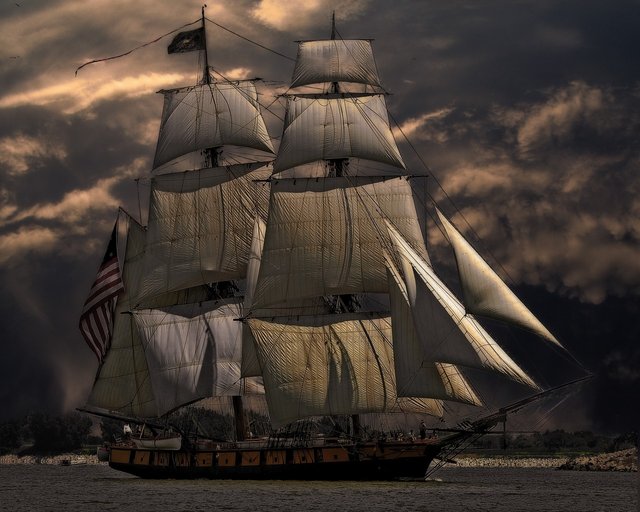

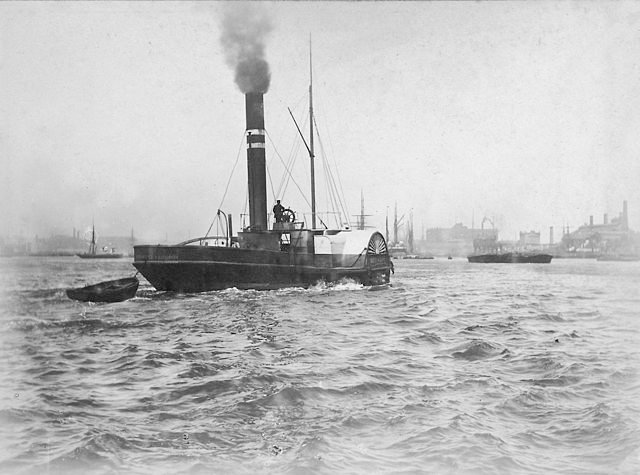


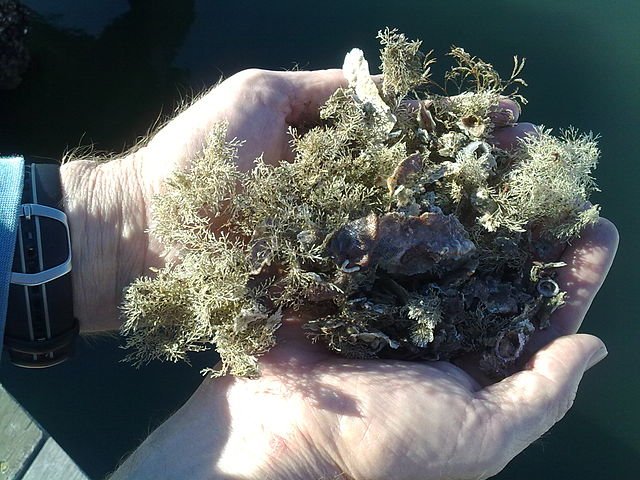

I fell in love with this article just by reading the introduction. Excellent my dear @whileponderin. Regards
Thanks @maurelvys. Your words just made my day.
Interesting piece. This is very educative and easy to grasp. I am fascinated at how these ideas were birthed
Thanks @ibk-gabriel!.
This is certainly an amazing exposition you made on the chains of historical events that finally lead to the creations of ship by man. Indeed challenges faced by the ancient man were instrumental to inventions and technological Renaissance that followed after.
I am never aware of biofouling. And this is my first time of hearing such. It is also amazing how Engr Tony Brennan borrowed a leaf from sharks and created effective solution to deal with the problem of biofouling.
Very detailed and succinct.
Regards
@eurogee of @euronation and @steemstem communities
Thank you very much @eurogee. Am honored.
Your article is very informative @whileponderin
I didn't know Egyptian were the first to engage in ship creation.
I guess I have learnt something today.
I sometimes see them as the first civilized country (my opinion though). Most early inventions where made by them and china. Am glad you love the article @gidionline.
As always @whileponderin, a very cool and interesting article.
I didn't know Egyptians were the first in creating a ship, nor that modern ships are affected by microorganism from the ocean.
And what can I say about sharks, I did know they have a lot of faculties but never thought their own skin was one of them.
Cheers mate!
I was actually surprized boats were not older :)
Me too.. Am glad boats and ships have evolved to what they are today. The risk of riding the reed boat is too much.
Nature is full of surprises. Do you know that this same idea gotten from the shark is also used in hospitals to keep bacteria off? Nature is amazing.
Thanks for your kind words @dedicatedguy
Hi @whileponderin!
Your post was upvoted by utopian.io in cooperation with steemstem - supporting knowledge, innovation and technological advancement on the Steem Blockchain.
Contribute to Open Source with utopian.io
Learn how to contribute on our website and join the new open source economy.
Want to chat? Join the Utopian Community on Discord https://discord.gg/h52nFrV
Thanks.